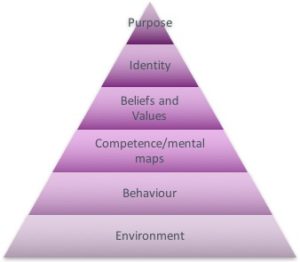
Creating a coaching culture
May 17, 2017
Creating a coaching culture with the right mind-set
May 18, 2017Mind-set and a coaching culture


Lots of companies tell us they are creating a coaching culture. But what does that mean companies are doing?

From a brief informal poll, many are just saying the words – well they have a consistent message and maybe some skills training on their menu of courses but little else. Our premise is that to create a coaching culture a particular mind-set needs to be in place. And a change of identity needs to happen for most leaders and managers. The first shift is to a growth mind-set amongst the people you want to be doing the coaching, usually the managers and leaders in the organisation.
To quickly recap on the science on mind-set (you can read a fuller account of Dweck’s mind-sets and the implication here)
Carol Dweck’s many years of research on success found people tend to have one of two mind-sets.
Fixed mind-set: Dweck describes as when people hold a belief that talent, ability and intelligence are things that you’re born with: ‘He’s very bright’, ‘She’s so talented’, ‘She’s a natural leader’, ‘He has a gift for languages’. When someone holds this mind-set, they believe people either have it or they don’t, and there are a range of behaviours which reflect this world view.
Growth mind-set: In contrast, when people have this mind-set they believe that talent, abilities and intellect can be developed. Their primary rule is to learn and learn new ways of learning. When they approach work with a growth mind-set they think things like, “It’s much more important for me to have a challenge than to be rated the best.” Of course, they do care about ratings but they care even more about having an interesting, challenging role where they are going to be exploring new areas and working with interesting and varied people. Dweck says, it’s not about intelligence and talent, and even if these traits are in abundance, her research show people see them as simply a starting point rather than the end-point.

These mind-sets tend to impact a managers’ beliefs about coaching and the willingness to coach.

Mind-set for coaching
These mind-sets impact a managers’ beliefs about coaching and the willingness to coach. Peter Heslin, and Dweck assessed managers’ mind-sets and their employees were then asked how much the manager helped analyse performance, gave useful feedback, acted as a sounding board, inspired confidence and supported new challenges. Managers with a fixed mind-set did little or no coaching nor did they give much performance feedback or help employees understand their strengths and weaknesses. In contrast the study indicated that managers with a growth mind-set noticed improvements in their employee’s performance, and coached. They also supported development projects and assignments.

Dweck found, when people learn about mind-sets and focus on times when they have had to learn something new and been successful, their beliefs can shift.

Dweck says that when you leave mind-sets alone they’re stable; people’s beliefs are not challenged and so they continue to think and act like they always have. And this stability is reinforced if the culture also has a fixed mind-set. Implicitly people start acting in line with the belief that talent is born not grown and supports that there is little point in development or coaching as people can’t change much, people either have it or they don’t.
But Dweck found, when people learn about mind-sets and focus on times when they have had to learn something new and been successful, their beliefs can shift. After training, managers who had adopted a growth mind-set – and those who had always had one – were more willing to coach and give constructive suggestions for improvement.
All this has a significant impact on performance management, engagement and of course creating a coaching culture. It also suggests that shifting mind-sets is a prerequisite to successful training in coaching, handling difficult conversations and people management generally.
Our premise is that to create a coaching culture you need to first shift the mind-set to growth.
What next
Once you have the mind-set what do you need? Creating a coaching culture, we believe requires a number of other elements. One useful way of thinking about this change is to think about the logical levels by which we describe our purpose, identify, beliefs, competence, behaviours and the environment we work in. Logical levels is a model derived from NLP and can be useful when thinking about transformational change.

Purpose
Firstly, managers need to understand not just the business case for coaching but what’s in it for them. The business case is fairly easy, there is lots of research which says employees who are coached are more productive, innovative and engaged. Your business case will be particular to your organisation – but basically it answers the question of Purpose, the why. Why do we need a coaching culture?
At this level managers also need to address their purpose as a coach “What’s the purpose of my being a coach?” It’s easy to skip over this one, but it’s crucial. If a manger is to mobilise people in their team do develop, they need to care enough to want to do this. This can be short-term, like the fire fighters focus in evacuating a building, or a longer-term sense of purpose which is part of why they are in their career. For example, managers may see coaching as a means to an end, getting better performance on a project or helping someone orientate into a new role. Or it may be about who they are as a manager and support their beliefs about their role and how people perform best. This level of awareness answers the question “What will my coaching achieve, change, improve or build in the work place?”
Identity = coach
Identify answers the question “Who am I when I coach?” What is both implicit and explicitly tied up in the role of manager as coach. This is what individual managers buy-in to and adopt as part of the identity as a manager. It is how they describe themselves not just what they do.
When you change culture, managers need to shift their identify to one with coaching as a part of it. “Managers (leaders) coach and develop their people.” The identity of a manager in the company is someone who does this, it’s not a debate, a nice to have or an option. Its integral to what gets people rewarded, promoted and employed. It also needs to be expressed in growth terms if you want to be consistent. ‘I seek to continually improve as a coach” or “Finding better ways to develop and grow…’ Growth mind-set is not ever done. It’s about striving, finding new strategies and continually improving.
Alongside identity are beliefs about the manager’s role, abilities and those of their people.
Beliefs and values
Mind-sets are kept in place by beliefs and values, these help us filter the vast amounts of information coming at us and to choose, often unconsciously how to act and what we focus on. These beliefs or mind-sets are often expressed at an identity level:
Fixed: “I’m a good technical engineer, I’m not a people person.” For this manager giving feedback and suggesting he connects more, putting him on a training course on coaching skills is not going to change his identity or the beliefs which sustain it.
In contrast, someone with a growth mindset about their role may say: “I’m striving to always get better an engineer and doing that involves getting my people to be grow their abilities too. My next challenge is to learn to help people learn. What are some things I can do? Who can teach me? Who is a good role model, what skills do I need to develop?”
How managers become coaching managers
Next, we need to pay attention to the change in competence and behaviour. We know people learn and adopt new ways of working when they have an experience which is both intense and enduring – both of these involve emotions. These type of experiences help neurons to ‘wire together’ making change more likely and sticky. Also, learning occurs when these are multiple senses activated and when there is insight rather than instruction. One of the best ways of achieving all of these and to role model your coaching culture, what you mean by it, is for managers to be coached themselves, either through peer coaching or a cascade of coaching. As for example, we are currently doing with a team in a government department. The most senior leader and two levels down are all receiving coaching from a small team of external coaches who are using common language and models within the context of the individual needs and goals. This reinforces the felt experience, creates a common language and means of describing the changes they are individually and collectively making and bonds them in a common experience.
Implicit and explicit learning
Many of our clients tell us people get the learning intellectually. Of course, the business case for a coaching culture, or inclusive leadership or growth mind-set makes sense but it just doesn’t seem to take root. People can tell you what’s meant to be happening and can even agree it’s good for the company and may even be good for them but behaviour doesn’t change. Or if it does the changed behaviour doesn’t endure when things get tough.
Research dating back to the 60’s shows we learn in two ways implicitly and explicitly. Much of this understanding stems from work Damasio did with a patient who suffered brain damage after an operation for epileptic fits. After the operation and for many years until his death patient HM could remember no explicit learning, not the person he met 2 minutes ago, what he did the day before or even the minute before. But he did remember and acquire social skills and reactions to pain. When a researcher shook hands with HM with a tack in his hand that gave HM a painful pinch he was very reluctant to ever shake hands with the researcher again even though he couldn’t say why. He had learnt implicitly.
Implicit learning takes place through experience, through a felt sense of what and how and why. Research by Matt Lieberman found this learning happens in different parts of the brain, the what and how via mirror neurons the why via the medial prefrontal cortex, the part of the brain that helps us think about ourselves and others. This suggests implicit learning requires us to understand why we should be coaching, not just how and what to do.
We tend not to use this implicit learning in a structured way in training. To some extent role models are a means of implicit learning but we tend to approach this at an intellectual level, getting senior leaders to describe how they coach for example, rather than unbundling their purpose, identity and beliefs.
We can see from the HM example implicit learning also comes with bodily sensations, HM knew to avoid the researcher not because he remembered there was a tack in his hand but because he implicitly associated the researchers hand with pain.
A different type of learning
To create a coaching culture managers, need to learn the implicit, embodied approach to coaching. This is more than a model or a set of steps. They need to implicitly feel what it is to be a coach. To coach effectively in different contexts and to respond to and recognise moment-by-moment coaching opportunities and changing needs requires behavioural flexibility. A manager’s skills and mind-set are a collection of habitual patterns of thoughts, feelings and actions, which become familiar over time. This familiarity and habitual responses can diminish a manager’s effectiveness as a coach; they will work well some of the time and not other times. They may work on good days but not when it’s tough.
To be able to flex and respond as the coaching need arises requires an investment to develop new habits. To do this authentically means that managers can’t do it by trying to follow steps or models. It requires cultivating the ability to connect and listen with the whole body not just the ears and to be able to recognise the coaching moments when they occur.

Can managers notice the moment-by-moment context and make the right choices?

Making the right choices
Can managers notice the moment-by-moment context and make the right choices?
The mind has a tendency to focus on the future (either worrying about what might happen, or planning what could happen) or the past (replaying what did happen, reliving past glories, shame etc) or a combination of the two imaging what could have been done differently in a past situation. The mind doesn’t really spend time in the present moment. Having your attention on the present moment is difficult as anyone who has practiced mindfulness can contest.
Managers who are coaches need to spend more time in the present noticing. This is key to being able to respond to the present moment and make choices in the moment – to ask a question, to wait in silence, to intervene or withdraw. Without the ability to notice the unfolding moments of the context no number of coaching models will work.
All of this takes time and effort, it takes a growth mind-set and a development programme that gives a felt experience. We have only really seen this happen with multifaceted programmes that are experiential, model the coaching culture and reward results. It takes an holistic approach intervening at each of the logical levels. Building both explicit and implicit beliefs and skills.
In the moment knowing what to do and say is not a cognitive exercise it is a feeling experience determined by identity and beliefs and is experienced in the body as well as in the mind.
Having a coaching culture could be a wonderful competitive advantage but like most good things in life it takes effort and more than a day at a workshop.
Related Content



